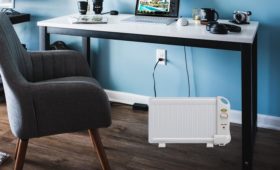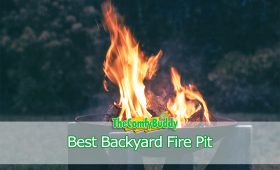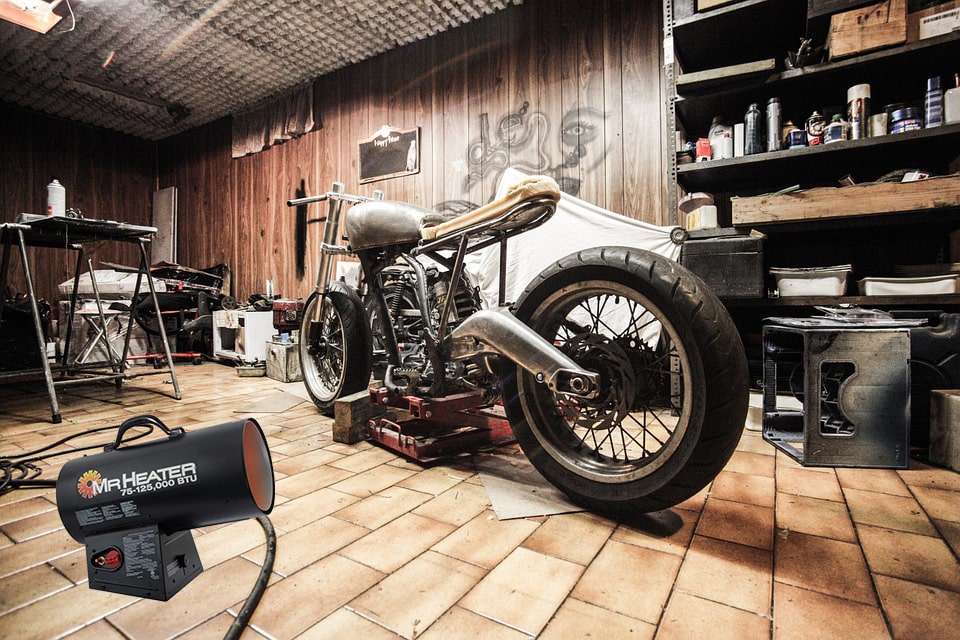 Looking to add some quick heat to your workshop or garage? Well, then a forced air propane heater may do the job just right for you! And if that just so happens to be the thing you are looking for, we listed the 9 best forced air propane heaters for you to consider!
Looking to add some quick heat to your workshop or garage? Well, then a forced air propane heater may do the job just right for you! And if that just so happens to be the thing you are looking for, we listed the 9 best forced air propane heaters for you to consider!
Table of Contents
Best Safety Forced Air Propane Heaters
| Image | Brand & Model | Max BTU | Max Space Coverage | Availability |
|---|---|---|---|---|
 | Mr. Heater MH125QFAV | 125,000 BTU | 3,125 sq. ft. | See Price |
 | STANLEY ST-60HB2-GFA | 60,000 BTU | 1,500 sq. ft. | See Price |
 | Mr. Heater Hero MH35CLP | 35,000 BTU | 850 sq. ft. | See Price |
 | Mr. Heater MH60QFAV | 60,000 BTU | 1,250 sq. ft. | See Price |
 | Pro-Temp PT-60V-GFA-A | 60,000 BTU | 1,500 sq. ft. | See Price |
 | DeWalt DXH90FAV | 90,000 BTU | 2,000 sq. ft. | See Price |
 | DeWALT DXH70CFAV | 68,000 BTU | 1,650 sq. ft. | See Price |
 | Protemp PT-150V-GFA-A | 150,000 BTU | 3,800 sq. ft. | See Price |
 | Hiland HIL-SHOP-LP60 | 60,000 BTU | 1,500 sq. ft. | See Price |
Where Is A Forced Air Propane Heater Used?
Forced air propane heaters are typically used in workshop or industrial applications. They aren’t used for home heating since there are way better alternatives to them. Regular propane, gas, or electric heaters are going to be better for home heating since they will likely be more space-efficient, less expensive, and more feature-rich.
Here’s where you could use a forced air heater:
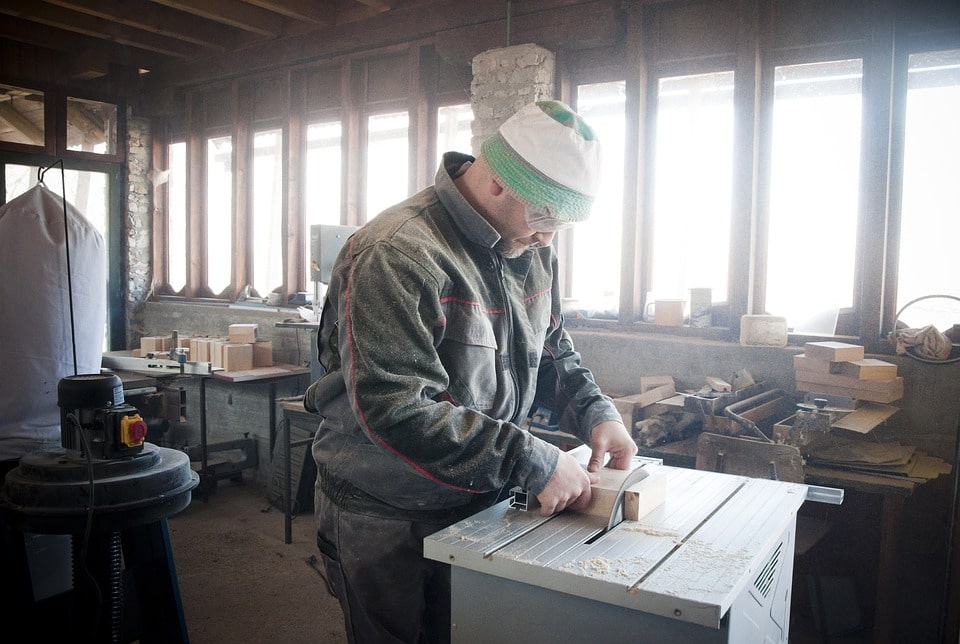
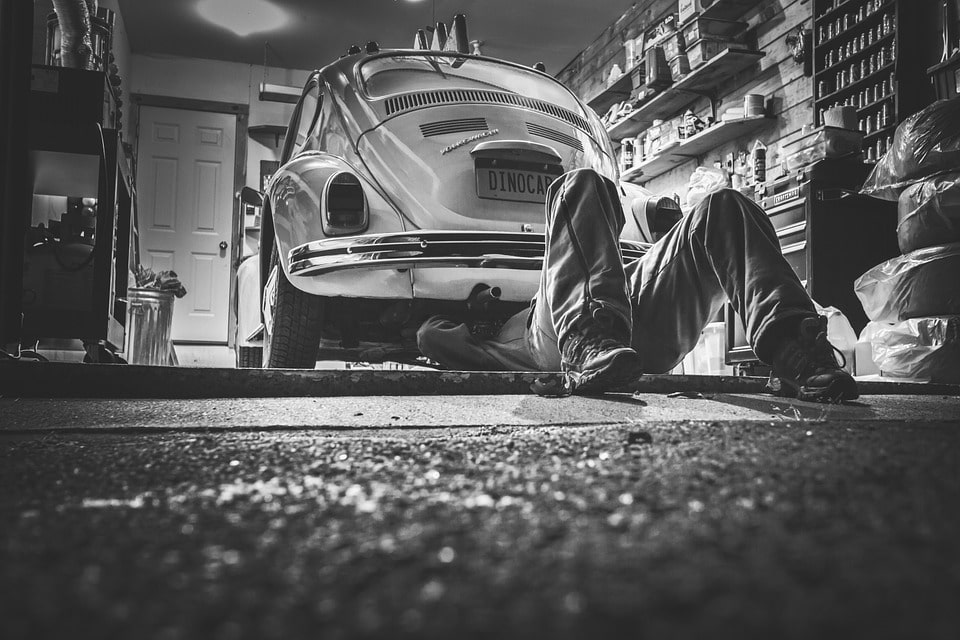
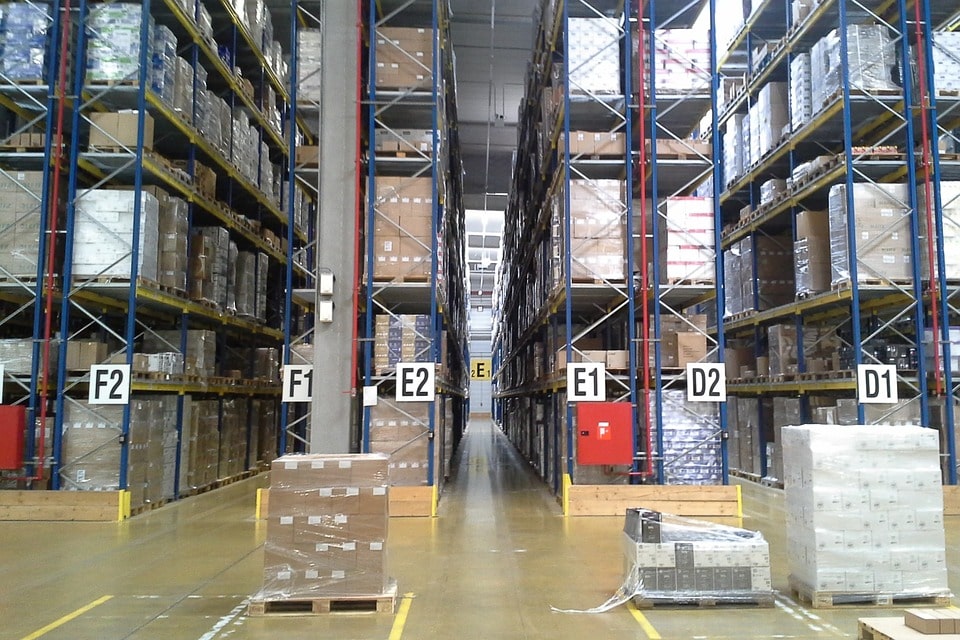

- In your workshop.
- In your garage.
- In a warehouse.
- In an animal barn
- Outdoors (to melt ice on your driveway, for example). Not all forced air heaters will be certified for outdoor use though.
How Does It Work?
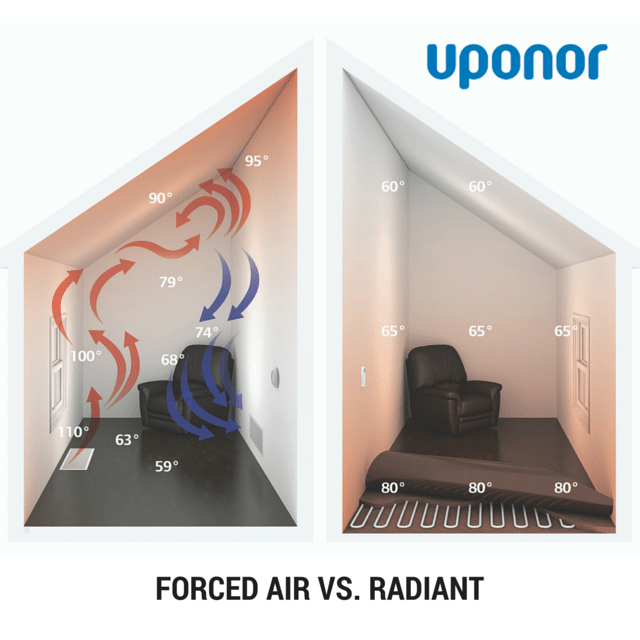
At their basics, forced air propane heaters work just like any other heater. Namely:
- The burner is ignited by a standing pilot, electric spark, or another type of igniter.
- Heat is produced through the combustion of fuel (propane in this case).
- The heating of the room takes place via convection (movement of heat from one place to another).
The key difference of forced air heaters from other heater types is that they have a fan to help move the heat around. This is why these heaters are called forced air – they are forcing the air to move around via the airflow delivered by the fan. The fan doesn’t increase the heat output of the heater, but it does assist with convection and heat spread throughout the area.
9 Safety Forced Air Propane Heaters
Mr. Heater MH125QFAV Forced Air Propane Heater – Editor’s Choice
 For moderately large garage or workshop spaces, the MH125QFAV forced air propane heater by Mr. Heater may be the right option for you.
For moderately large garage or workshop spaces, the MH125QFAV forced air propane heater by Mr. Heater may be the right option for you.
Boasting 75,000-125,000 BTUs of heat output, this heater is claimed to heat up areas up to 3,125 square feet. Mr. Heater also claims that this thing can run up to 11.5 hours on a 40-pound propane tank on the low setting.
The Mr. Heater propane heater also features a high-output fan. According to Mr. Heater, the Quiet Burner Technology allows this forced air heater to run 50% quieter than standard propane heaters. It probably won’t be inaudibly quiet, but it should be quiet enough to not distract you from work.
To ensure the safety of operation, this forced air heater features a max temperature switch and a flame-out shutoff. Aside from that, it’s also CSA-certified for emission safety and efficiency. The CSA certification may also matter in areas where it is required by law.
The main downside of this heater is that it doesn’t have a thermostat, so it’s not going to adjust its heat output and fuel consumption on the fly based on room temperature. Besides, this thing seems to have flimsy parts, as indicated by a number of users.
Why Choose this Heater?
This heater’s key benefit is its high heat output. If you have a large space to heat, then this guy may be the right option you.
Stanley ST-60HB2-GFA Forced Air Propane Heater
 This 60,000BTU forced air propane heater by Stanley is a nice option for areas up to 1,500 square feet.
This 60,000BTU forced air propane heater by Stanley is a nice option for areas up to 1,500 square feet.
In terms of construction and features, this forced air heater is simpler than the previous heater. Namely, it seems not to have temperature controls, meaning that you can run this thing only at full power. And needless to say, it doesn’t have a thermostat for automatic output adjustment.
This isn’t necessarily a downside though – for example, if you want to heat outside spaces, you may not even feel that you are lacking temperature controls.
And while this forced air heater doesn’t have temperature adjustment, it does have an auto temperature shutoff that will shut the heater down if the heater is overheating.
What Stanley also boasts in this heater is its cold-start ignition system. The ignition here is a piezo system that doesn’t require electricity or fuel – you just need to push the starter button so that the piezo ignitor fires up the burner.
Why Choose this Heater?
If you want a cheaper heater that just delivers heat, then the Stanley forced air heater may be the best option for you. It allows for minimum temperature adjustment, but it should do a good job if you need heat as fast as possible.
Mr. Heater Hero Forced Air Propane Heater MH35CLP – Best Cordless Option
 The Mr. Heater Hero forced air propane heater is even smaller than the previous one – it just delivers 35,000 BTUs of heat output, but it is cordless. As claimed by Mr. Heater, this is enough to heat up 850 square feet spaces.
The Mr. Heater Hero forced air propane heater is even smaller than the previous one – it just delivers 35,000 BTUs of heat output, but it is cordless. As claimed by Mr. Heater, this is enough to heat up 850 square feet spaces.
This unit still seems not to have temperature controls. It also doesn’t have a thermostat, but that won’t be an issue if fuel-efficiency isn’t too important for your needs.
An interesting feature present in the Hero heater is the tip-over safety shutoff. In such a small heater, this feature is quite useful since it’s pretty easy to tip over. And, of course, this forced air heater is CSA-certified and has a high-temperature limit switch along with a flame safety shutoff.
This heater is also cordless – to take care of its power needs, it has a rechargeable battery that lasts up to 8 hours per charge.
Unfortunately, the ignition system here appears to be hit-and-miss. It’s a piezo system that’s easy to use and doesn’t require electricity, but it seems to have had durability issues with many users. If you do encounter such an issue yourself, consider upgrading the igniter to a better one, e.g. an electronic system.
Why Choose this Heater?
Small, lightweight, portable, and cordless – the Mr. Heater Hero heater is a great option if you want a heater that is easy to move around. It won’t be heating too large spaces, but that’s not a problem since you can just place the heater closer to yourself.
Mr. Heater MH60QFAV Forced Air Propane Heater
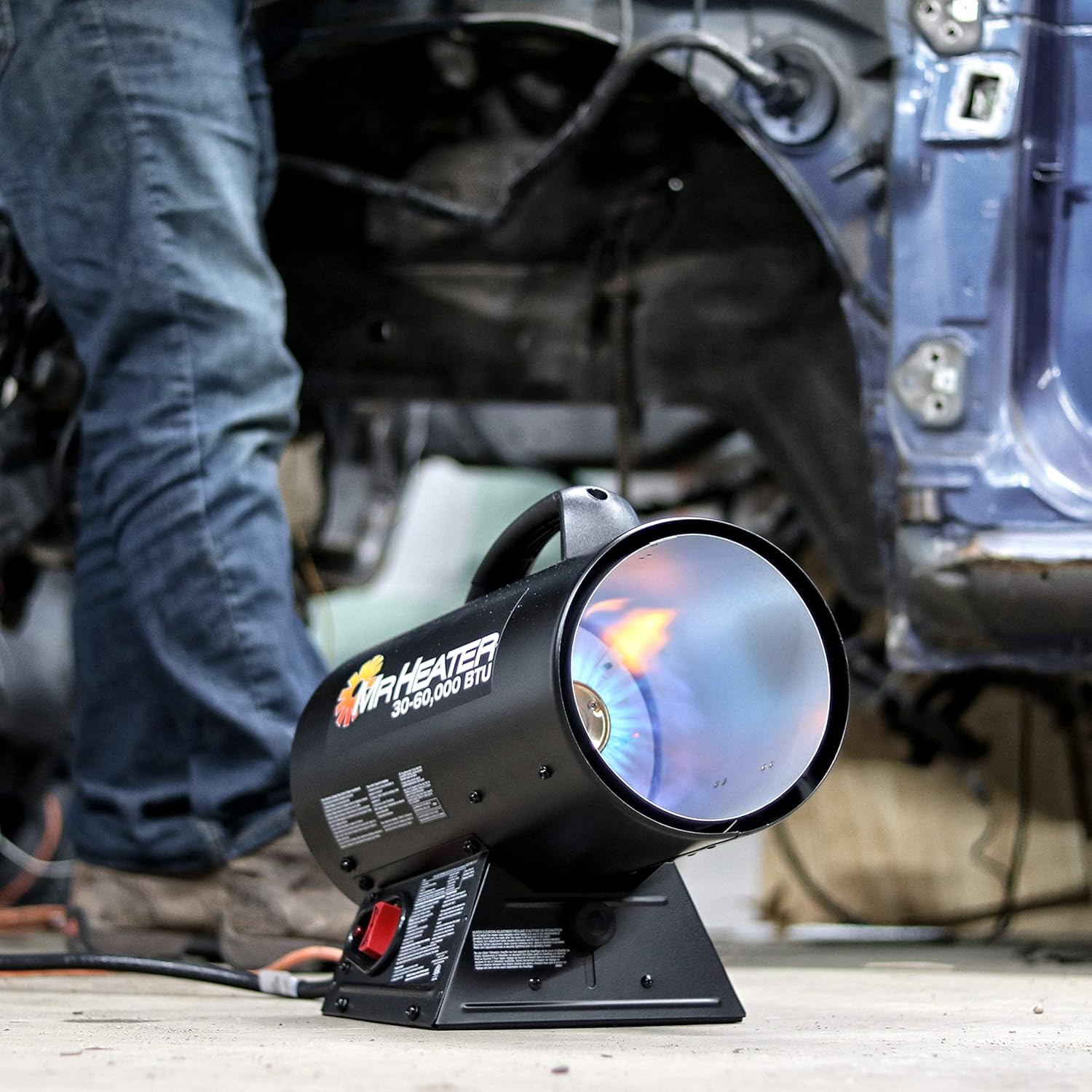 The MH60QFAV forced air propane heater is a smaller alternative to the 125,000BTU Mr. Heater unit we’ve reviewed at the very beginning.
The MH60QFAV forced air propane heater is a smaller alternative to the 125,000BTU Mr. Heater unit we’ve reviewed at the very beginning.
The two heaters have similar features – the same ignition system, the QBT technology that is claimed to make this thing run 50% quieter than regular heaters, a high-temp limit switch, and CSA certification. The main difference between the two units is that this one is half the size.
Delivering 30,000-60,000 BTUs of heat, this forced air heater is claimed to heat up to 1,500 square feet areas. On the lowest output setting, this thing should be good for 750 square feet spaces.
Mr. Heater also claims that this propane heater runs for 14 hours on a 20-pound propane tank on low settings, which is pretty nice.
Why Choose this Heater?
Want a variable-output heater that’s not too large? If so, then the MH60QFAV heater may be a great option! It’s not too large and heavy either, so you shouldn’t have issues with moving it around.
Pro-Temp PT-60V-GFA-A Forced Air Propane Heater
 If you want a wider range of adjustability in your forced air propane heater, then the Pro-Temp PT-60V-GFA-A may be an excellent option.
If you want a wider range of adjustability in your forced air propane heater, then the Pro-Temp PT-60V-GFA-A may be an excellent option.
This thing delivers up to 60,000 BTUs of heat and can heat up to 1,500 square feet areas. To allow you to control the efficiency of this unit, Pro-Temp has equipped this heater with 3 heat settings – 40,000, 50,000, and 60,000 BTUs. At the minimum output, this propane heater should be able to heat around 900 square feet areas.
Another notable feature in this propane heater is that its base angle can be adjusted up and down. To be fair, the 60k and 125k Mr. Heater units also seem to have this feature, but it’s not mentioned in their product descriptions, so we can’t tell for sure.
For safety, this thing has a high-temperature limit with shutoff and a flame shutoff. Besides, it’s CSA-certified.
Finally, you have a continuous electronic ignition system in this thing, which appears to be similar to the igniters used in the Mr. Heater 125k and 60k units. This igniter should be reliable, easy to use, and not use up any fuel to light the burner.
Why Choose this Heater?
The key benefit of this forced air propane heater is adjustability. The 3 heat settings provide decent flexibility, and you may also adjust the base angle to direct the heat a little bit better.
DeWalt DXH90FAV Forced Air Propane Heater
 The DXH90FAV forced air propane heater by DeWalt pushes adjustability even further. Its heat output ranges from 50,000 to 90,000 BTUs, which is very nice if your job site conditions vary significantly. The maximum coverage of this heater is claimed to be 2,000 square feet.
The DXH90FAV forced air propane heater by DeWalt pushes adjustability even further. Its heat output ranges from 50,000 to 90,000 BTUs, which is very nice if your job site conditions vary significantly. The maximum coverage of this heater is claimed to be 2,000 square feet.
Another nice thing about this propane heater is the included 20 feet hose with a regulator. All the previous heaters included only 10 feet long hoses, and the 10 extra feet of length may come in handy for you.
The igniter in this heater is a convenient continuous unit that’s similar to what a few other of the overviewed heaters had. Besides, this thing again has no thermostats, but it does have a max temperature switch. The DXH90FAV heater is also CSA-certified.
And lastly, DeWalt also boasts the familiar Quiet Burner Technology which makes this thing 50% quieter than regular units of the same size.
Why Choose this Heater?
The DeWalt DXH90FAV may be the best forced air propane heater for you if you want added flexibility at the job site. This heater has a wide output adjustment range, as well as a longer 20 feet hose for added convenience.
DeWALT DXH70CFAV Forced Air Propane Heater
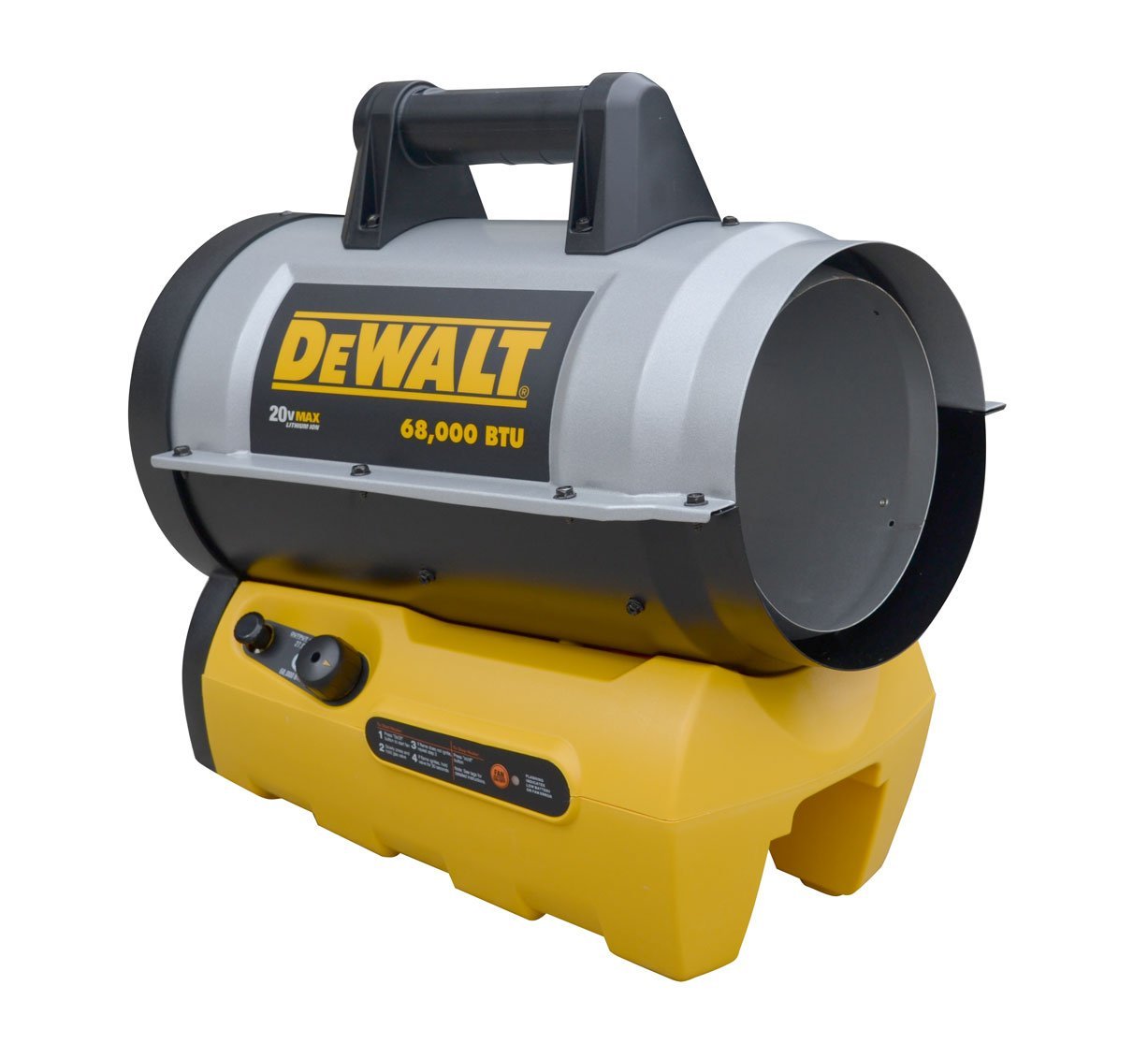 The DXH70CFAV forced air propane heater is a little weaker than the previous DeWalt heater, but it’s cordless. If you do want to have a little more mobility at the job site, this cordless heater is a great option. You do have to buy 20V MAX or FLEXVOLT batteries and a charger for it separately though, so keep that in mind.
The DXH70CFAV forced air propane heater is a little weaker than the previous DeWalt heater, but it’s cordless. If you do want to have a little more mobility at the job site, this cordless heater is a great option. You do have to buy 20V MAX or FLEXVOLT batteries and a charger for it separately though, so keep that in mind.
The heat output in the DXH70CFAV can be adjusted from 27,000 to 68,000 BTU, which is a pretty wide range. At the max output, this thing should cover around 1,300 square feet.
In terms of safety, this forced air heater boasts a high-temperature limit switch, and it’s also CSA certified.
And if you are concerned with quietness, then you will get the 50% noise decrease delivered by the Quiet Burner Technology.
Why Choose this Heater?
If you want a decently powerful and flexible heater, then the DXH70CFAV heater may be the right option. It’s cordless, it has a wide range of output adjustment, and it’s pretty quiet.
Pro-Temp PT-150V-GFA-A Forced Air Propane Heater
 If you liked the 60,000BTU Pro-Temp heater but its capacity wasn’t enough for you, the PT-150V-GFA-A may be a better option for you. With up to 150,000 BTUs of heat output, this propane heater is claimed to cover up to around 3,800 square feet of area.
If you liked the 60,000BTU Pro-Temp heater but its capacity wasn’t enough for you, the PT-150V-GFA-A may be a better option for you. With up to 150,000 BTUs of heat output, this propane heater is claimed to cover up to around 3,800 square feet of area.
The features in the two Pro-Temp heaters are the same – the main difference between the two units is size & output. The PT-150V-GFA-A heater has 3 heat settings – 120k, 135k, and 150k BTUs – safety features like high-temp shutoff & flame-out fuel cut, and continuous electronic ignition.
The angle-adjustable base is also here. Albeit not a must-have feature, it may make your job a little bit easier.
Why Choose this Heater?
The Pro-Temp PT-150V-GFA-A has the adjustability of the 60k Pro-Temp model but has double the heat capacity. If adjustability and high heat output are the things that you are looking for, then this guy may be that best forced air propane heater for you.
Hiland HIL-SHOP-LP60 Forced Air Propane Heater
 Finally, we have the Hiland HIL-SHOP-LP60 forced air propane heater. This forced air heater delivers up to 60,000 BTUs of heat, which should allow it to heat up to around 1,300-1,500 square feet areas.
Finally, we have the Hiland HIL-SHOP-LP60 forced air propane heater. This forced air heater delivers up to 60,000 BTUs of heat, which should allow it to heat up to around 1,300-1,500 square feet areas.
The heat output may not be too remarkable in this thing, but what is notable about the Hiland heater is its safety features. This heater has an anti-tilt switch, overheating protection, as well as low-fuel cut-off. Besides, it is CSA-certified.
The igniter here is a piezo unit that, albeit not the most durable out there, is reliable and simple to use in most conditions. Unfortunately, you again don’t get a thermostat with this thing, but that’s also true for all other models on the list.
Why Choose this Heater?
Want a forced air heater packed with safety features? If so, the Hiland heater may be the right option for you. It’s also pretty decent in terms of heat output!
How To Choose The Right Forced Air Propane Heater?
You have 9 great models to pick from, but how do you choose the very best forced air propane heater for your needs? Well, below, let’s have a look at the things that matter in forced air propane heaters.
Cordless vs corded
First, consider whether you want a corded or cordless unit. Forced air heaters require power for the fans and the ignition system (if it’s electronic). To get power, corded heaters are plugged into 120V outlets and cordless ones rely on a battery.
The benefits of cordless forced air heaters are simple – they can be easily moved around the job site without having to worry about the power cord length. Besides, they can be operated in areas where there is no electricity.
On the other hand, you will have to worry about the battery that powers electronic components. Namely, you will have to recharge it every once in a while. Not that the electronic components will drain the battery in minutes, but you’ll have to pause your work every few hours.
Some cordless forced air heaters will require you to buy batteries separately. For example, the DeWalt DXH70CFAV is a cordless heater but it doesn’t come with batteries, you need to buy them separately.
Heat output
Then, you have to consider the heat output of the forced air heater. It should not be over-the-top for the area you will be heating – you’ll spend more money on a more powerful heater, and if you don’t use its potential, then you’ve wasted money.
It’s quite difficult to pick the right heat output for given room size. There are plenty of factors involved in how effective a heater will be, including the area’s insulation, the desired temperature increase, and the outdoor temperature.
You may find simple BTU-to-area size charts online, but these don’t really work well for workshop or industrial applications. If you need a more precise way of determining the right amount of BTUs, then you should first consult the manufacturer’s recommendations. Most sellers indicate the max area that a heater can warm up.
You may use online BTU calculators like this one as well. This particular calculator should be pretty accurate since it takes into account the room dimensions, outdoor temperature, and insulation.
Or, you may use manufacturer guides. For example, Mr. Heater provides this BTU chart based on room volume:
| BTU Per Hour | ||||
| Cubic feet | The desired temperature increase in Fahrenheit | |||
| 20 | 30 | 40 | 50 | |
| 5,000 | 14,000 | 20,000 | 27,999 | 34,000 |
| 7,000 | 19,000 | 28,000 | 38,000 | 47,000 |
| 10,000 | 27,000 | 40,000 | 54,000 | 67,000 |
| 15,000 | 40,000 | 60,000 | 80,000 | 100,000 |
| 20,000 | 54,000 | 80,000 | 107,000 | 133,000 |
| 30,000 | 80,000 | 120,000 | 160,000 | 200,000 |
| 50,000 | 133,000 | 200,000 | 266,000 | 333,333 |
Keep in mind that most charts will give BTU guides based on the room area, while this chart is given for the room volume. This chart will likely be more precise for your needs, but you may have to do some trial and error to choose a properly-sized heater.
Heat settings
The heat adjustment is also very important in forced air heaters.
It’s one thing to have a heater that can produce 120,000 BTUs, but it’s a whole another thing when you can control the amount of heat coming out of the heater. In certain situations, you would want to have some flexibility in heat adjustment.
This is important because you don’t want to work in a hot room. Besides, you’ll be using less energy by adjusting the heater down to get only as much heat as you need.
Pay careful attention to how the heat output is adjusted in a forced air heater. You may have 2 settings, or you may be able to choose any setting from a given range.
But while adjustability is great, in certain situations, even one heat setting would do a good job. For example, you may get a simpler heater for outdoor use, though it would still be less energy-efficient than an adjustable heater.
Integrated fan/blower
The fan or blower is the key element in a forced air heater. While it’s not easy to choose a heater based on the fan alone, it may be an important thing for you to consider.
The key spec of a fan or blower is its airflow measured in CFM. Unfortunately, it’s difficult to say how CFM is going to affect a heater’s effectiveness in heat dispersion. But the general rule is that the higher the CFM, the more air the heater will be able to move around.
Thermostat
If you want to up the fuel-efficiency of your heating, then you should look for a forced air heater with thermostat.
Unfortunately, none of the overviewed models come with one. Usually, only the largest and most powerful forced air heaters come with thermostats.
The job of a thermostat is to adjust the heat output of the heater as the temperature changes. Alternatively, the thermostat may turn the heater off once the selected temperature is reached. This allows minimizing the use of fuel and electricity when heating is no longer necessary.
A thermostat is a great feature, but as mentioned above, most of the smaller forced air heaters don’t have them. You may try to hook a thermostat to your heater if you’re tech-savvy though.
Tilt protection
Some forced air heaters will have tilt protection. Basically, the unit will shut down if tilted.
This feature makes more sense in small units that are easy to tip over. Heavy and large heaters don’t really need it since you probably won’t accidentally kick them down. But depending on the terrain, you may want to get a heater with tilt shutoff just in case.
High-temp protection
You probably won’t find a forced air heater that doesn’t have overheating protection (also called high-temp protection). This is an essential feature that any forced air heater should have.
With that said, pay attention to it and make sure that the desired heater does have overheating protection.
Flame-out protection
Some forced air heaters also have flame-out protection. This feature shuts the heater down if the flame goes out for some reason. Most forced air heaters out there probably have this feature, but if you do want it, you should make sure just in case that the desired heater indeed has it.
Size and weight
Be also careful with size and weight. Forced air heaters tend to be compact and light enough for transport, but there is a big difference between a 20- and 40-pound heater. If you won’t be able to carry a heavy unit, go for something lighter.
And when it comes to size, be sure that the job site will have enough space for the heater.
Included hose
Finally, consider the hose included with the forced air heater.
Usually, forced air heaters come with hoses equipped with a regulator. What you should pay attention to here is the length of the hose. Besides, keep in mind that the quality of the included hose may be subpar, so you may need to switch to a better one. Some manufacturers advise against using third-party hoses though.
Safety And Maintenance of Forced Air Propane Heaters
Forced air propane heater safety
There are a few safety precautions you should follow while operating a forced air heater. The manual of your heater should contain safety instructions – if so, then be sure to follow them. But we’ll provide some general safety tips below that you should follow:
- Use the heater in accordance with local codes and laws.
- Inspect the heater before each use for signs of damage or dirt. Have the heater inspected by a certified specialist at least once per year.
- Do not convert the heater to work with other fuel types.
- Ensure adequate ventilation in the room where the heater is installed. Your heater’s manual should provide you with accurate directions on how much airflow should be provided. If you feel headaches, dizziness, nausea, burning eyes & nose, or dry mouth/sore throat, immediately shut the heater down and ventilate the area.
- Place the propane tanks at least 7 feet away from the heater. The minimum required distance may differ from area to area.
- Do not direct the heater’s exhaust towards the propane tanks.
- Do not use an indoor heater if it has not been certified for outdoor use. Indoor-only heaters will get damaged from water or humidity.
- Place the heater away from combustible materials (generally 3-6 feet away) and the power outlet (6 feet away). Consult the heater’s manual for more accurate guidelines for your heater model.
- Operate the heater on a level and stable surface.
- Do not handle or service the heater while it is running or hot after shutdown.
- Only connect the heater to a properly grounded extension cord or receptacle.
- Disconnect the propane tank from the heater before storage, especially if storing the heater indoors.
Forced air propane heater maintenance
Maintenance of forced air heaters will mostly come down to cleanup. When it comes to repairs, you shouldn’t attempt to fix your forced air heater on your own. This should only be done by a trained service person.
No matter which heater model you have, the cleaning process mostly comes down to this:
- Shut the heater down and disconnect it from the propane tank.
- Let the heater cool down for about half an hour to an hour.
- Remove dirt and dust out of the heater with a vacuum.
- Wipe the outside surfaces of the heater with a cloth (slightly dampened if necessary).
In most cases, you won’t need to disassemble anything to give your heater a good clean. And unless you know what you are doing, you should not do any disassembly to clean the heater. If you clean the heater at least once per month, you shouldn’t need to do a deep cleanup.
FAQs
What’s the difference between forced air propane heaters and forced air central heating?
While the names of these two heating systems are very similar, they are very different and sometimes confusing to people.
Forced air central heating is a heating system popular in North American homes. In such a system, the heat is produced by a heater (powered by fuel or electricity) and then distributed throughout the home via ducts and vents. A forced air central heating system is not portable.
A forced air propane heater is a portable heater that assists heat distribution with an integrated fan. Portable forced air heaters are vastly different from forced air home systems – they aren’t usually used at home (though they may be), not to mention that they have a different design.
Can you plug a duct to the heater to help with the heat spread?
Probably not since the forced air heaters get pretty hot. Unless allowed by the manufacturer, don’t attempt to do any third-party modifications to your heater.
Can you use a forced air propane heater with no electricity?
You can, but the fan won’t run without electricity. The heater will produce heat, but it won’t have the fan to assist with its distribution. In some heaters, the igniter is also going to rely on electricity.
Where does the carbon monoxide come out of in these heaters?
It comes mixed with the hot air. You should thus ensure proper ventilation in the heated area.
Can you buy a forced air propane heater for garage use?
Yes. You can buy a forced air heater pretty much for any indoor area, but you’ll need to ensure adequate ventilation for it.


